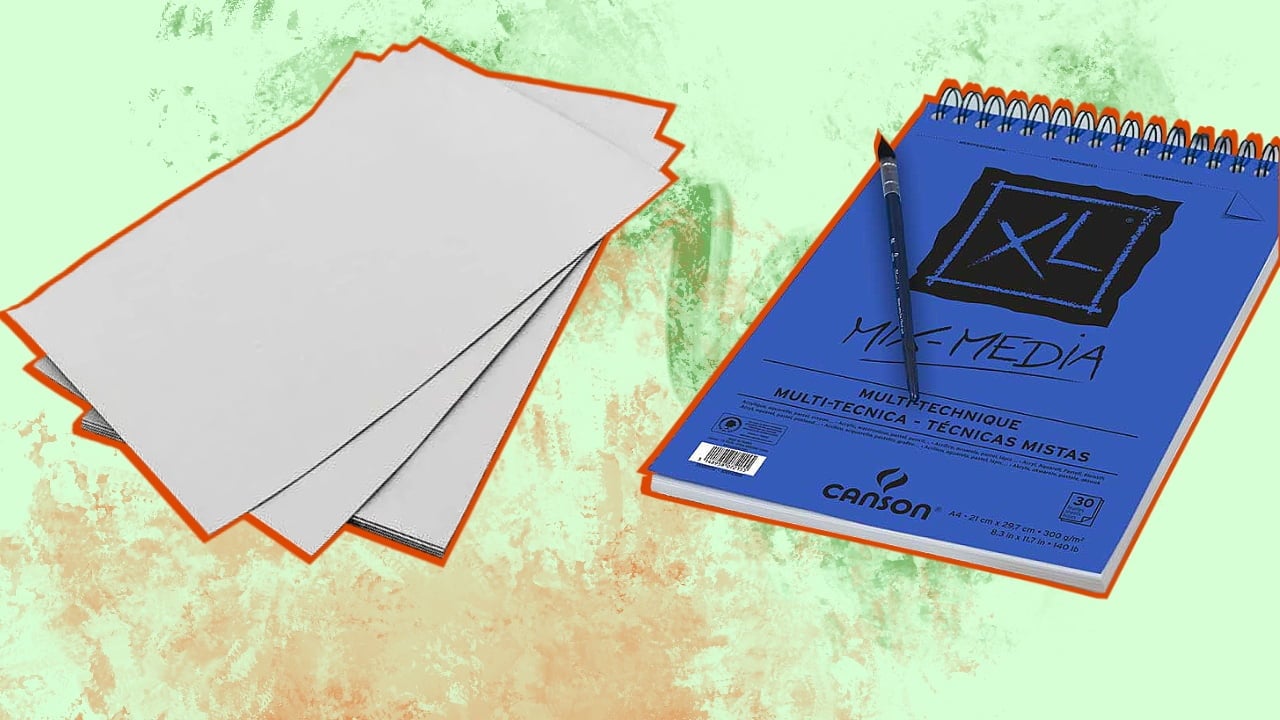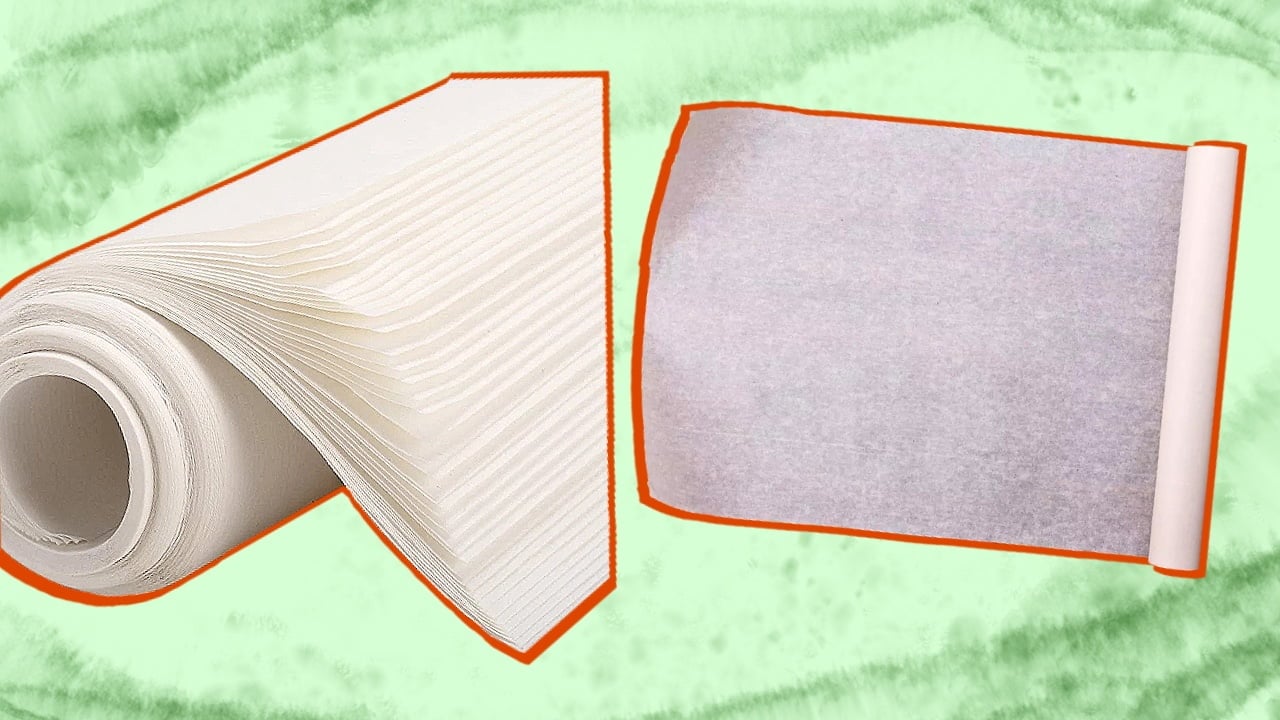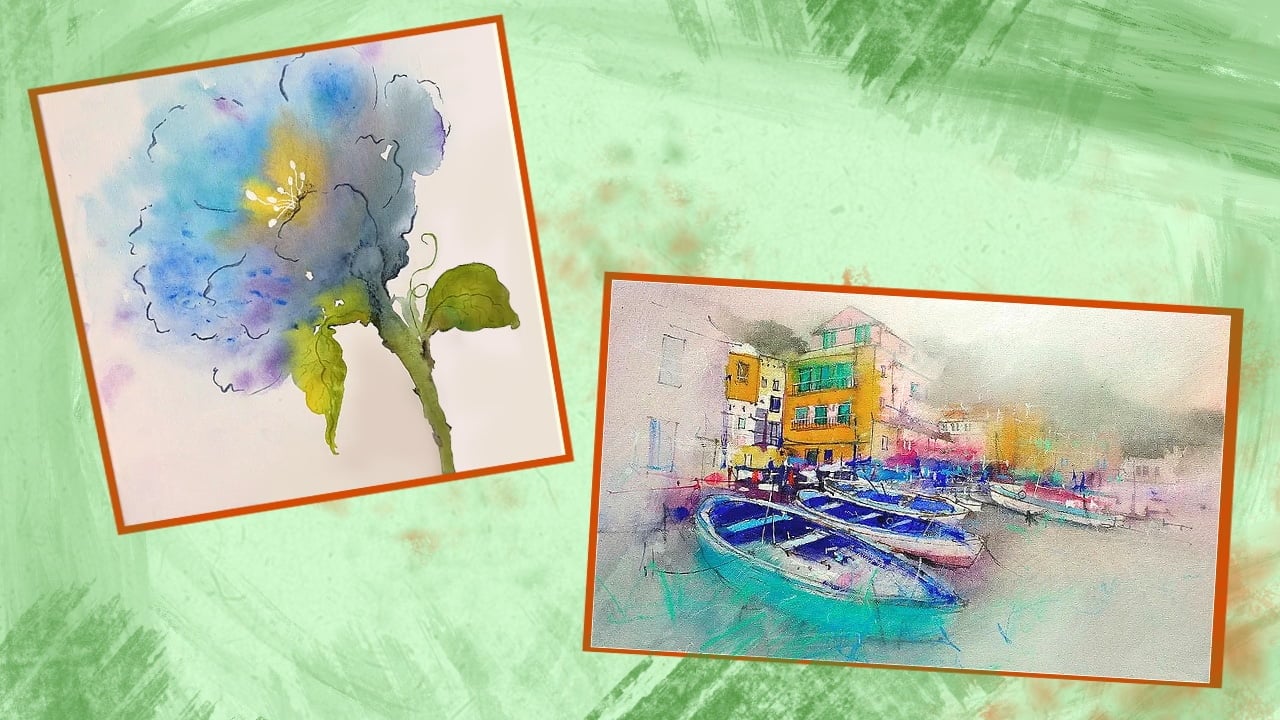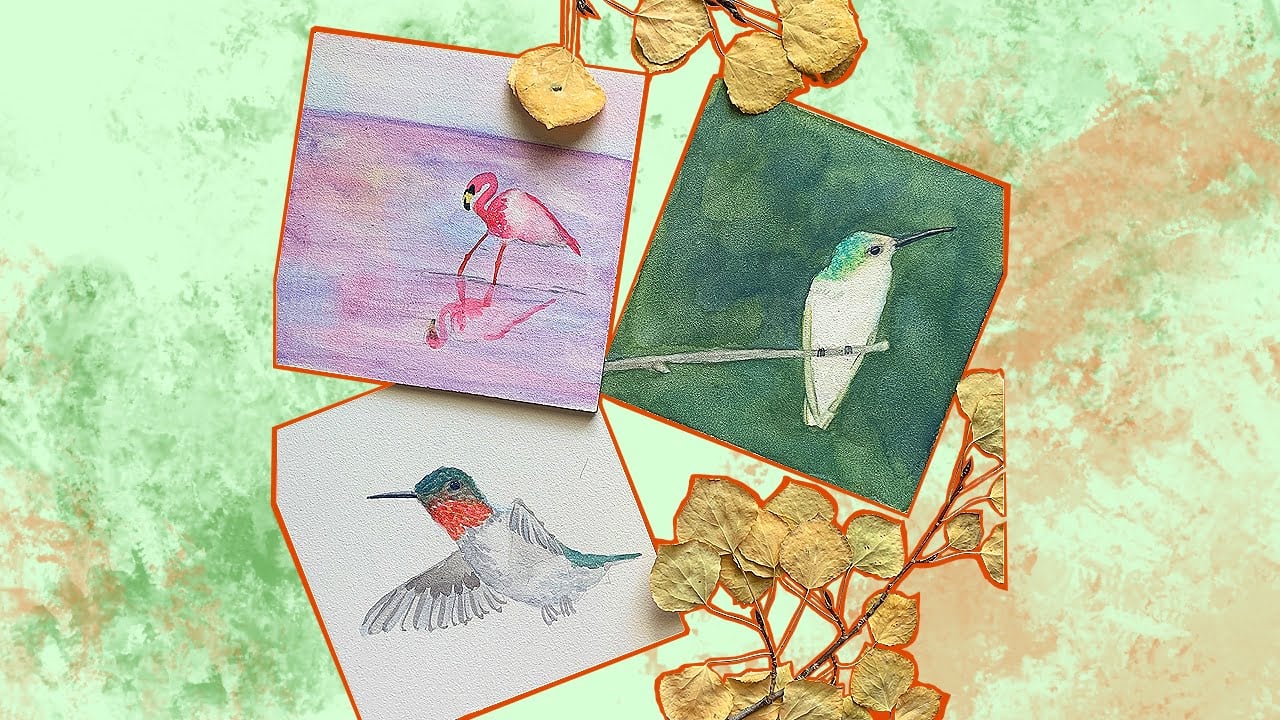The Best Alternatives To Watercolor Paper | An Easy Guide
Watercolor canvas, parchment paper, fabric, rice paper, Aquabord, synthetic paper, and vellum are some of the best alternatives to watercolor paper. While they can provide a better painting experience than regular paper, you may have to make adjustments based on the painting techniques. While being one of the oldest art forms in the world, watercolor […]

Watercolor canvas, parchment paper, fabric, rice paper, Aquabord, synthetic paper, and vellum are some of the best alternatives to watercolor paper. While they can provide a better painting experience than regular paper, you may have to make adjustments based on the painting techniques.
While being one of the oldest art forms in the world, watercolor painting has evolved a lot with time.
But one thing has remained constant, and that is the use of thick surfaces that can absorb watercolors effectively. Modern artists use specially designed watercolor paper, but it may not always be possible for everyone to have access to such paper.
That’s why I’ve mentioned some excellent alternatives in this guide that you can use.
How Is Watercolor Paper Different From Regular Paper?

Watercolor paper differs from regular paper in several ways, such as its construction, weight, texture, etc. While it is available in various sizes, weights, and textures, all types of such paper are designed to be able to hold water.
1. Weight
The most obvious difference between watercolor paper and other types of paper is its thickness, also called weight. When it comes to art, paper that is thicker is of better quality, and the weight of any paper is measured by weighing 500 standard-size sheets, called a ream.
But some types of watercolor paper are available in multiple weights, such as 90 pounds, 140 pounds, and 300 pounds. Watercolor paper that weighs 90 pounds is unsuitable for painting since it starts buckling and dissolving when excess water is applied. It is more suitable for ink drawings.
Then there is paper that weighs 140 pounds, which is ideal for painting purposes and is generally quite affordable. However, you need to stretch it at intervals to prevent it from buckling. Finally, you get watercolor paper weighing 300 pounds, which is the most expensive type of watercolor paper and of the highest quality.
It generally does not buckle or warp unless you apply too much water.
Compared to these types of watercolor paper, regular paper weighs just five pounds per ream and will always buckle when water is applied. You can not stretch it since it tears easily, so artists use lightweight paper for rough sketches before moving on to heavier watercolor paper for the final painting.
2. Construction
Another thing to keep in mind besides the paper weight is the texture of different types of watercolor paper. This can vary depending on the pulp used for their construction, as some papers have an even surface, while others may have uneven textures.
Uneven surfaces are generally used to create different types of effects. Watercolor paper is mostly manufactured using cotton, which makes it extremely strong and absorbent. This is essential since artists need to use different techniques when working and a surface that does not tear or warp easily.
Moreover, cotton paper is essentially acid-free paper, so it does not turn yellow with time. But regular paper made from wood pulp can easily dissolve, warp, and turn yellow after some time.
3. Sizing
Watercolor paper contains sizing, a substance made using gelatin that allows you to use watercolor paints before they dry by preventing the paper from absorbing them quickly. You can find two types of sizing on watercolor paint – internal and external.
When the gelatin substance is added to the pulp of the paper, it is known as internal sizing. And when it is applied as a coating on top of the paper, it is called external sizing.
4. Texture
Another difference between watercolor paper and regular paper is that the former has more bumps, also known as its tooth. This prevents the watercolor paint from sliding around as it does in the case of regular paper. There are three types of textures generally found on watercolor paper, hot-pressed textures, cold-pressed textures, and rough textures.
Watercolor paper with a hot-pressed texture is extremely smooth and has very few bumps. It is suitable for most artists who need to work on fine details. Cold-pressed paper has medium roughness with more bumps than hot-pressed paper and is most suitable for beginners.
The reason for this is that you can easily try out different techniques on this type of paper without worrying about the paint moving around. Rough paper has the maximum number of bumps and is used for artwork that does not require a lot of details.
Because of these reasons, watercolor paper is the most suitable choice for making watercolor art. However, in many cases, getting such paper may not be possible, and you may need to look for alternatives. Fortunately, there are a few alternatives that can be used in such instances, such as parchment, rice paper, etc.

The Best Alternatives To Watercolor Paper
There is no denying the fact that high-quality watercolor paper is the best option for watercolor painting. However, such paper can cost a lot, making it unsuitable for many artists, especially those just starting out. And if you just want to practice, spending a considerable amount of money might not be a good idea.
Alternatively, you may only want to experiment with different painting surfaces and compare the results with artwork on watercolor paper. For such situations, having information about the various alternatives available can be handy.
Here are some of the top alternatives to watercolor papers.
1. Watercolor Canvas
Watercolor canvas is a popular base material that is most commonly used for acrylic and oil paintings. However, regular canvas on which watercolor gesso has been applied in multiple layers can be used for watercolor painting if watercolor paper is not available.
That being said, watercolor canvas does not absorb watercolor paint as well as watercolor paper or other similar textured bases. This can make it a bit difficult to add layered washes on the surface. But this also offers an advantage, as you can wash off the colors more easily in case changes need to be made.
Watercolor canvas allows you to add a combination of watercolors, oil, acrylic paint, and gouache to the artwork. You can even use multiple layers of varnish on top of any artwork done on this base to preserve it.
Finally, with watercolor canvas, it is possible to create artwork in sizes other than the standard watercolor paper ones. Some famous artists known for using watercolor canvas include William Blake, James Whistler, and Edward Hopper.
2. Parchment Paper
Parchment paper may be created using animal skin or plant-based materials, because of which it has a very textured surface. I would like to point out that when you paint watercolor on parchment, the colors tend to be a bit muted because the tone of the base is warm.
One workaround is using gouache when working on such surfaces, which can help create bright and vivid paintings. Also, parchment paper is not a great choice when using oil paint since it can easily get damp.
3. Fabric
Light and thin textile fabrics like silk and cotton gauze can be used as substitutes for watercolor paper. But controlling the bleeding of colors can be quite difficult when using fabrics for painting.
How much color bleeding occurs will depend on the fibers of the fabric. So, I recommend mixing the watercolors with a fabric medium when painting on fabrics to reduce color bleeding.
You can even apply the fabric medium after first painting with the colors, but the brightness of the colors can get muted. Another challenging aspect of using a light fabric for painting, especially when mixed with a fabric medium, is that the paint will dry quickly.
It would be best to use art supplies, like a drying time extender, but the good thing about fabrics is that they can be used with several types of paints, such as acrylics. Artists who prefer using fabric for watercolor artwork include Sheila Hicks, Chiharu Shiota, and others.
4. Rice Paper
Rice paper is a specialty paper that provides a highly absorbent surface that is transparent and extremely thin and can be used for the watercolor painting process. It is most commonly used in Japanese and Chinese ink paintings and is usually pasted using adhesive or mounted on a mat board before painting.
You can find rice paper in designed (pre-printed) and plain variants, with the former having embedded or embossed patterns. Since this thin paper is transparent, you may find the lighter colors being affected by the mat board behind the paper.
Good quality paper with designs can help make watercolor paintings more interesting. This is possible since it can add some texture to the artwork through fine wrinkles, or you can crumple it up and get the same results.
Rice paper is a great choice for pieces that have some calligraphy, but you need to be careful when using it on a normal canvas as it is very delicate. Rice paper is used by artists like Carol Leigh and Ryan Fox.
5. Aquabord
Artists who are unwilling or unable to buy watercolor paper can use Aquabord for their paintings. This base material has its lower surface coated with mineral-enriched clay that lets pigments and water flow freely for smoother, softer finishes. Also, the surface texture is highly absorbent and can be used for techniques like glazing.
This means you can apply several layers of paint while retaining the vibrancy of the colors. Also, this watercolor paper alternative is highly versatile and can be used with materials like gouache paint. It even allows lifting the paint, making it easier to deal with problems like stains or blooms.
6. Synthetic Paper
Yupo synthetic paper or baking paper is another non-traditional option you can try out in place of watercolor paper. But since this is waterproof, any paint applied to this paper will remain wet until the water evaporates. Because of this, it is impossible to stack several layers of paint on this material.
Using synthetic paper also requires some preparation beforehand, such as cleaning the paper with rubbing alcohol to remove dirt and dust. This should be followed by creating an outline using a colored pencil or watercolor pencils. Additionally, avoid touching the surface, as that can easily smudge the paint.
The biggest advantage of using this material is that it is reusable and allows washing away the entire artwork if needed. Taylor Ikin is the most famous artist who prefers using synthetic paper.
7. Vellum
Vellum, generally used for botanical art, is a material created from animal hide and is another non-traditional substitute for watercolor paper. It has an off-white, smooth surface that can help add depth and glow to paintings while being used to create realistic artwork.
As original vellum can be quite expensive, you can use plant-based paper vellum when working with watercolor pencils and paint. Vellum was most famously used by Albrecht Dürer for his plant paintings.
8. Terraskin
Terraskin paper is similar to Yupo since both are manufactured using stone and are non-traditional options. However, it does not attract dust and is a bit costlier. It is also an eco-friendly option since wood pulp is not used in its manufacture and can be used with pastels, markers, and colored pencils, besides watercolors.
9. Mixed Media Paper
Mixed media paper is paper that has a lot of weight and tooth with a drawing surface that may be made of vellum. However, this paper has less tooth than traditional watercolor paper, which makes it more suitable for details.
The name mixed media is derived from the fact that this paper can be used with different mediums, such as ink, markers, acrylic colors, and more. Strathmore is the most famous manufacturer of mixed media paper, while Artios is also an excellent brand for this type of paper.
Since mixed media paper can be used with different mediums, it can provide paintings with different textures and is very effective in helping create different effects. On the flip side, mixed media paper does not allow multiple, heavy layers to be created.
10. DIY Alternatives
Some people recommend using DIY alternatives like regular printer paper, coffee filters, or tissue paper for watercolor painting. However, keep in mind that such papers are extremely thin and cannot hold much water, so you are unlikely to get great results. They are best suited for practice purposes.
Alternative materials can both enhance and reduce the appeal of the finished artwork, depending on how they are constructed and used. For instance, fabric can be used with several types of watercolors but allows them to bleed and dry quickly. If supplies like a time extender are not used, it can make the painting look incomplete or cause smudging.
Using a material like rice paper can enable you to add more textures to the painting. Thus, it can be used to create a pleasing effect, thanks to the tiny wrinkles and lines.
Beginners who want to try watercolor painting on alternative materials should look for materials with a bit of thickness and texture. This will prevent the paint from flowing freely, making it easier to manage. Also, I recommend cleaning the material with rubbing alcohol and letting it dry before starting to paint since dirt particles can make it hard to paint properly.
High-quality watercolor paper can be quite costly, and most alternatives are cheaper in comparison. However, there are a few exceptions, such as natural vellum, which is an expensive material, and high-quality fabric that isn’t very cost-effective.
Some alternative materials, such as Aquabord, allow techniques like glazing and can be used with mediums like gouache paint. However, this does not hold true for all materials, as fabrics and synthetic paper do not work very well with such techniques. Techniques like wet-on-wet are especially difficult to achieve on such materials as the paint flows easily, and you cannot apply multiple layers.
Factors you should consider when selecting watercolor paper alternatives include the quality of the material, its texture, weight, and compatibility with different types of colors. The material should not allow the paint to flow easily and must be absorbent enough to allow the stacking of layers.
Watercolor Paper Alternatives FAQs
Tip
Going with a material that has a rough texture can enhance the effect of the painting and make it look more exciting. However, it can be tricky to work with such materials, especially if you are trying it out for the first time. So, try to create an outline of the painting before filling it in with colors to avoid smudging.

Conclusion
Watercolor canvas, rice paper, parchment, and the other options I’ve mentioned in this guide are some of the best watercolor paper alternatives you can use. However, selecting the right one will require considering factors such as your personal requirements, skill level, and type of artwork to be done.
I recommend trying out different options, as that will help you get an idea of how various materials interact with watercolors. Once you’ve tried out the different options, it will be simpler to select one that is easy to work with and can provide good results.
